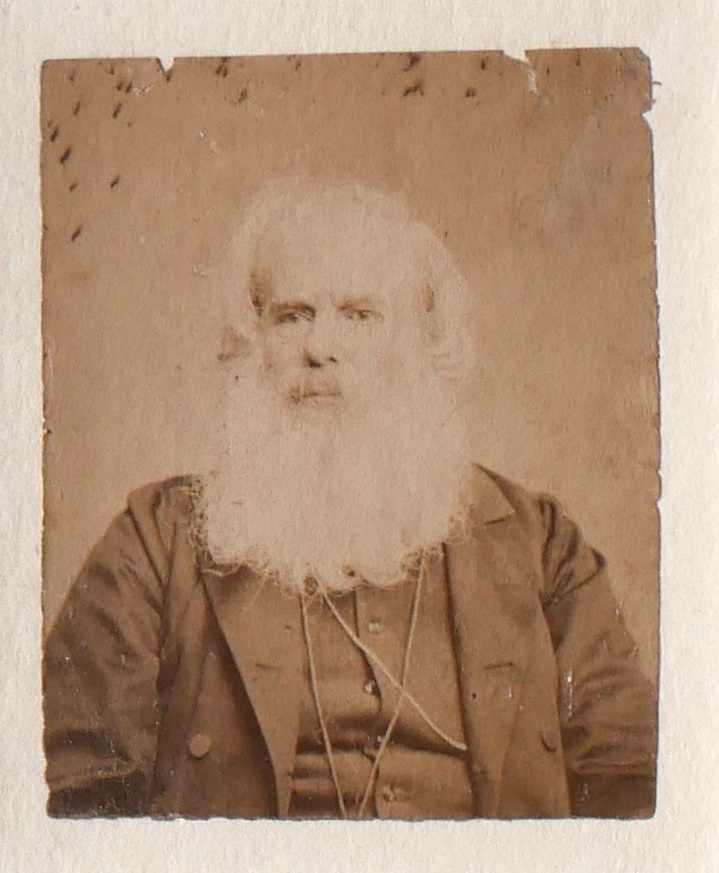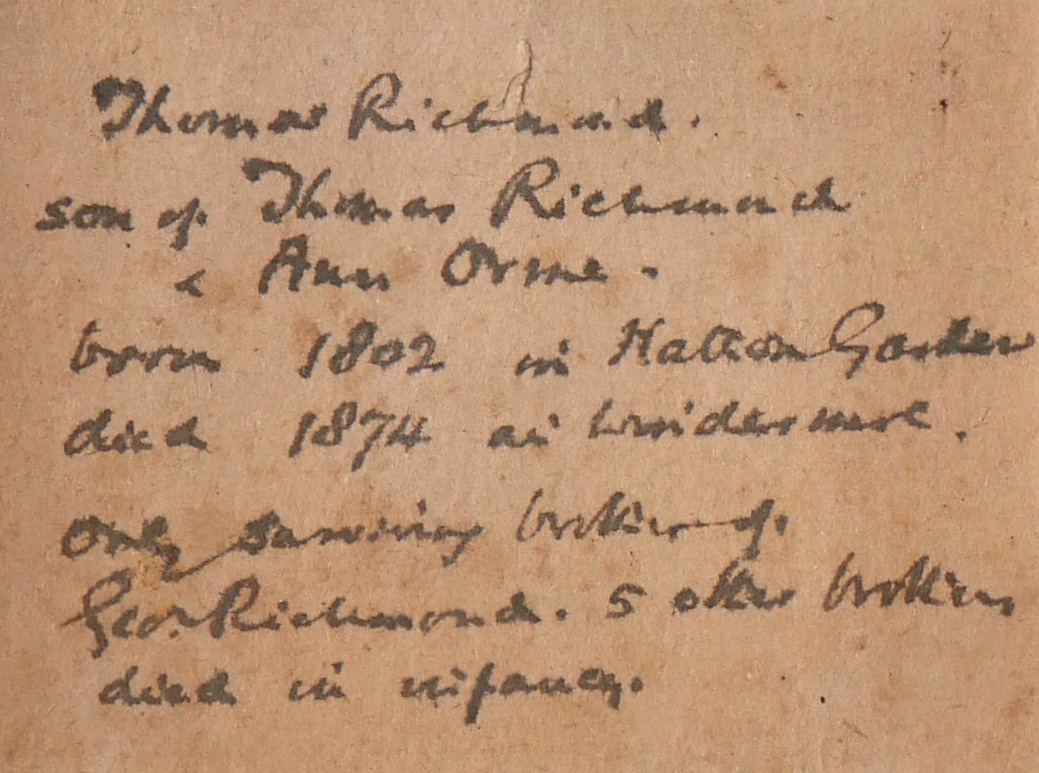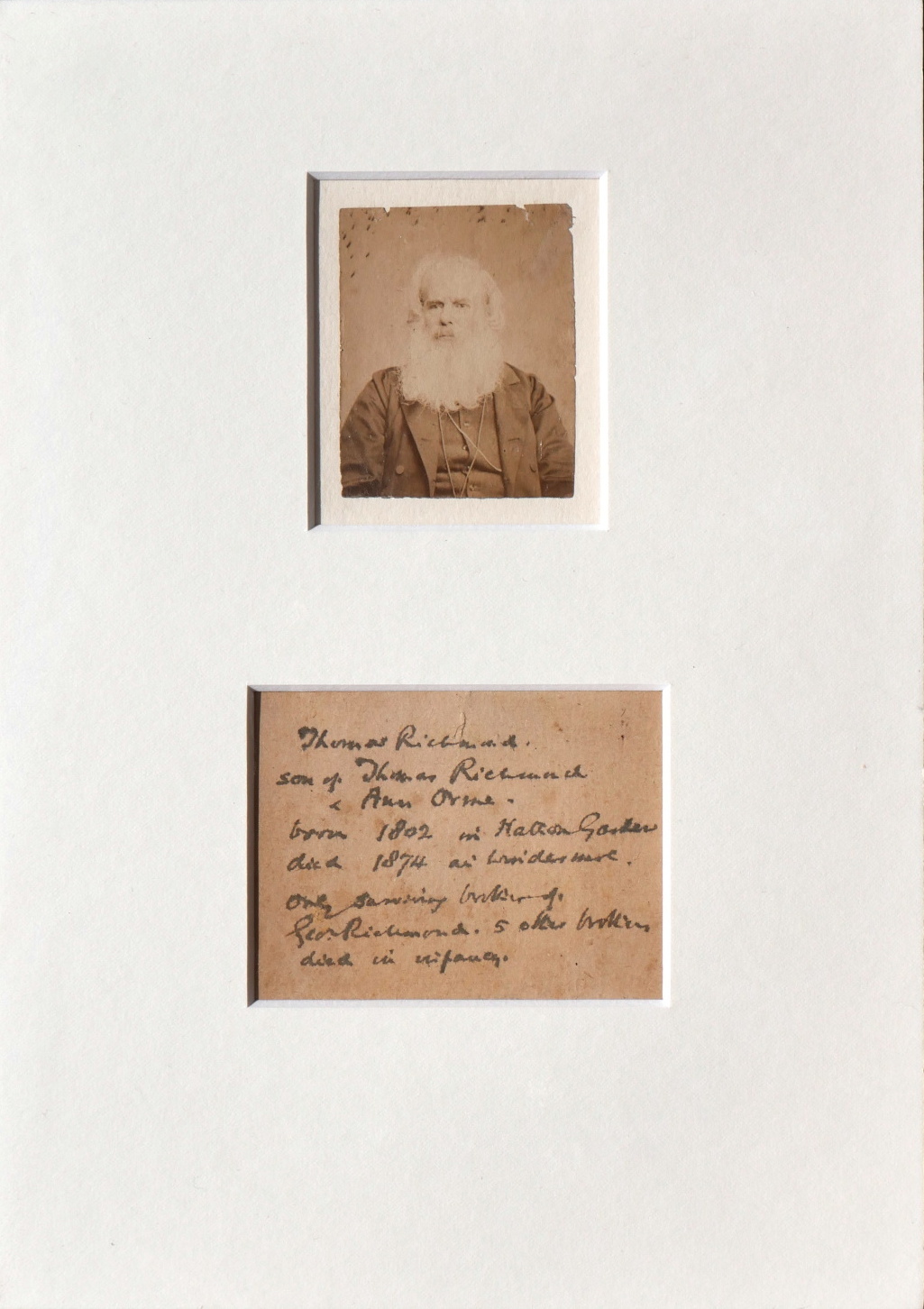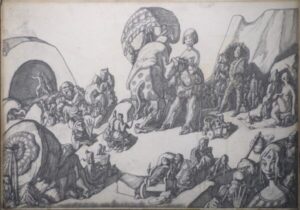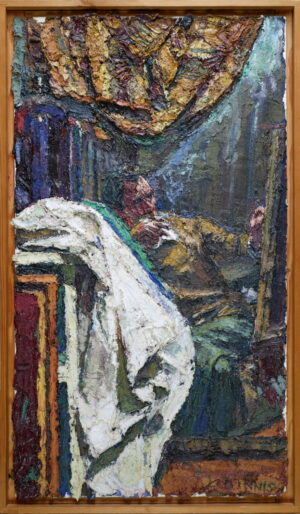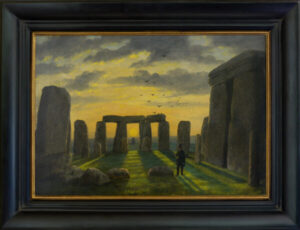Description
The photo is mounted with a description on the artist written on a separate sheet of paper displayed below the portrait. The inscription reads: Thomas Richmond, son of Thomas Richmond, Ann Orme, born 1802 in Hatton Garden, died 1874 in Windermere. He was the only surviving brother of George Richmond. 5 other brothers died in infancy.
Thomas Richmond was a portrait painter, known for his idealised pictures in the so-called Keepsake style. His father Thomas Richmond (1771–1837), was a miniature painter, and his brother George Richmond RA (1809-1896) was a celebrated portrait painter.
Richmond initially practiced in Sheffield, and later moved to London. His main clientele was among the hunting fraternity. Between 1833 and 1860 he exhibited fifty one portraits in London. He exhibited forty-five portraits at the Royal Academy and six at the Suffolk Street gallery. Richmond’s paintings are close in style to his father’s work, but distinguished by the characteristic use of dark stippling in the background.
Richmond and his brother George had met Ruskin during his trip to Rome in 1840-1. He accompanied him on his visits to galleries. John Ruskin’s father commissioned Richmond to paint his daughter-in-law Effie Gray, Effie wrote of the finished work to her mother: ‘…it is the most lovely piece of oil painting but much prettier than me. I look like a graceful Doll but John and his father are delighted with it’. Ruskin’s father was not as delighted with the portrait of Effie as she believed. He wrote to his son that Thomas was inferior as an artist to his brother: “Tom I regret to say cannot hold a candle to George – It is second rate or lower”.
Tom Richmond died in 1874 at Windermere, where he had purchased an estate but was buried in Brompton Cemetery, London.
Brand
Richmond, George (1809-1896)
George Richmond was born to Thomas and Ann Richmond on the 28th March 1809. A natural facility for draftsmanship revealed itself at an early age. He is one of the youngest students ever to have been admitted to the Royal Academy schools. The Academy permanent collection holds drawings made by Richmond while studying in the school of the Antique.
In 1825 he met William Blake and, along with Samuel Palmer and fellow student Edward Calvert, became devoted to the aging artist. The young men would come to refer to themselves as the Ancients. The group followed the artistic principles of Blake and worked to ideals inspired by renaissance painters, particularly Michelangelo and Dürer. The party retired to Palmer's country home at Shoreham during the late 1820's, residing together and developing their aesthetic theory. They lived simply and worked hard.
In 1831 Richmond married Julia Tatham, daughter of Charles Heathcote Tatham. The marriage was immediately central to his life and they were to have thirteen children, ten of whom survived into adulthood. The necessities resulting from such a large family compelled Richmond to change direction artistically. It was impossible to follow the eclectic road taken by the Ancients and feed all the hungry mouths. The ramifications of this situation remained with Richmond for the rest of his professional life.
Richmond was an extremely religious young man. His beliefs chimed with the growth of evangelical devotion and he found a fellow communion among the members of the "Clapham Sect". Sir Robert Inglis was an early supporter of Richmond, and benefactor to the children of Henry Thornton, one of the founders of the Clapham group. It was through Inglis that Richmond received an important commission in 1832. Richmond landed a coup in painting the great emancipator, William Wilberforce. The positive public response to this portrait established Richmond, almost overnight, with a successful portrait practice.
From the early 1830's portrait painting became Richmond's primary source of income. By the late 1830's his financial security was such that he could afford to travel to Italy with his young family and that of Samuel Palmer. Richmond's experiences in Italy are recorded in his journals, which comprise part of this archive.
Richmond rarely left Britain after a second journey to Rome in 1840-1841. He worked hard over the next forty years, painting around 2500 of the most prominent figures of Victorian society. His learning in art practice and art history led him to be considered one of the country's foremost experts on painting restoration. This discipline took on more importance for him as his energies for portrait work flagged in the 1870's and 1880's. His residence, Porch House, in Potterne, Wiltshire, was regarded as a model of sensitive architectural restoration. He declined the position of director of the National Gallery at least once, citing ill health. Health was a perennial concern of this long-lived hypochondriac.
Julia Richmond died in 1881 and from this point Richmond entered the last, relatively secluded phase of his life. His closeness to the survivors of the Thornton clan is particularly evident towards the close of his life. Richmond died in 19th March 1896; having seen his son William Blake Richmond elected a Royal Academician the year before.
